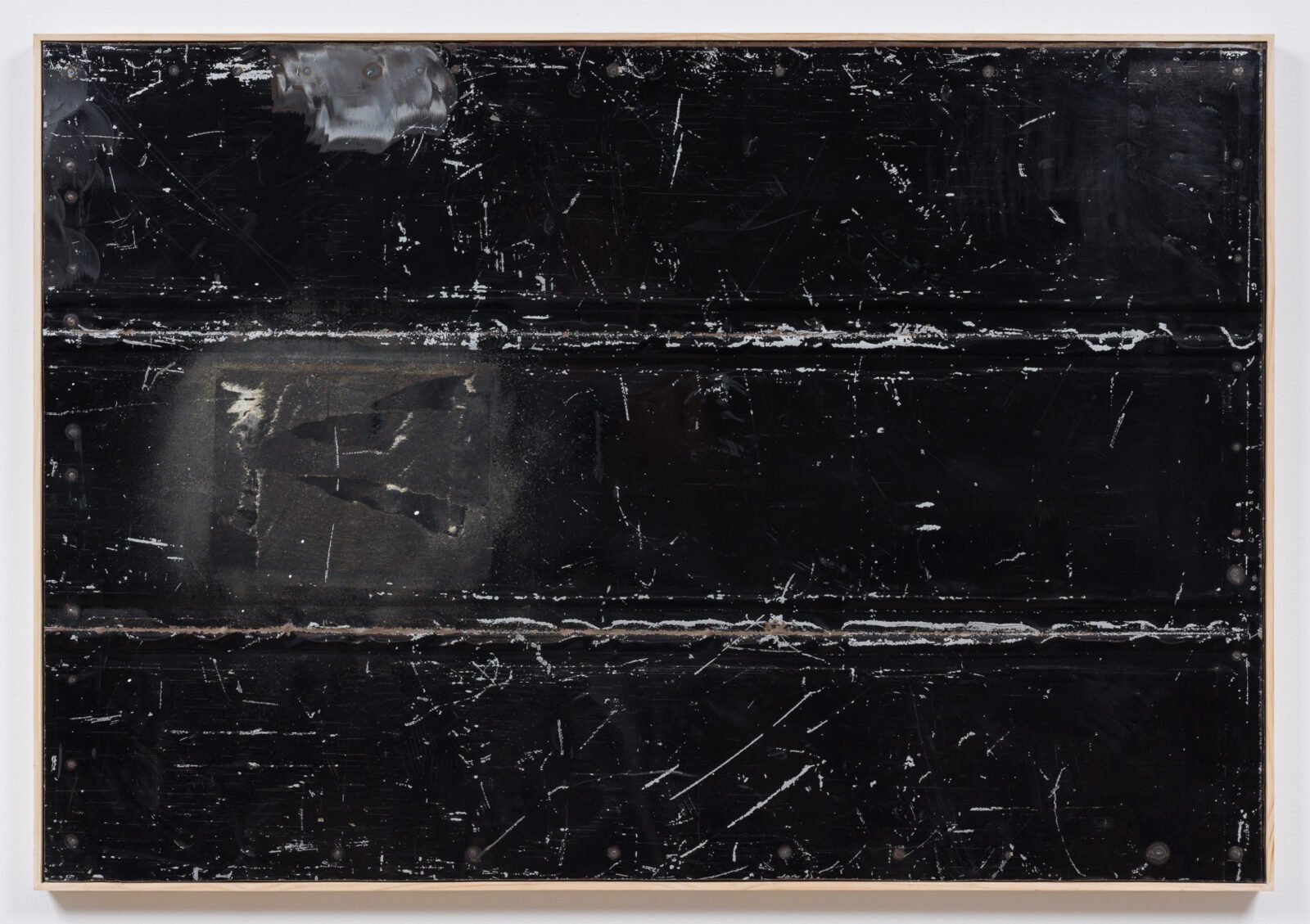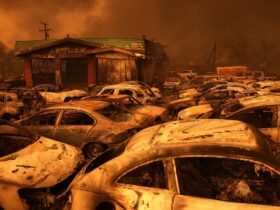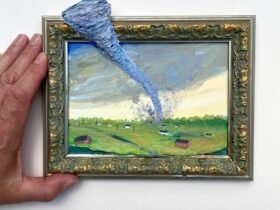LOS ANGELES – During the Cold War, the CIA secretly funded cultural initiatives that promoted Abstract Expressionism as a shining example of American freedom and democracy. Meanwhile, the country supported a coup that toppled the democratic government of Iran, home of artist Farshid Bazmandegan. These incongruent actions by our government in the mid-20th century form the basis for Bazmandegan’s solo exhibition, Floating in betweenat Track 16 Gallery.
The artist focuses on a few important materials: emergency blankets, tar and steel oil barrels. These materials refer to the displacement and human costs of our government’s actions around the world, as well as the natural resources that shape much of our foreign policy. One of the main reasons for the 1953 coup was to protect British oil interests in Iran.
The flattened steel oil barrel in ‘Untitled’ (2022) mimics the proportions and shape of a flag with three horizontal stripes. It is a darkly humorous commentary on how, in the eyes of some governments, entire countries can be reduced to the resources that can be extracted from them. The drum’s surface is covered in scratches and scuffs, perhaps symbolizing the human cost of such abstractions or the tarnishing of a nation’s image left in its destructive wake.

“Landscape of Exile” (2024) begins, like many works in this exhibition, with a gold-coated emergency blanket glued to a tar-covered wooden panel. Bazmandegan burned parts of the piece, melting the glittering gold of the blanket so that the tar bubbled up to reveal a deep black, painterly surface; other parts of the work are painted in different shades of blue and red. If it had just been paint on canvas, this work could easily have been created by a mid-century American abstract painter.
Materially seductive and elegantly crafted, these modestly scaled works would work well in a commercial art setting. This only reinforces the sense of cognitive dissonance in Bazmandegan’s work. The history of painting is filled with artists who weave discordant or even contradictory shapes, forms or colors into a single image. The artist extends this idea beyond formal relationships to include the duplicity of so-called democratic countries that act in service of capitalism’s insatiable hunger for resources.

By deliberately creating this kind of work (two larger, less marketable sculptural installations are also in the exhibition) and by connecting the language of abstract expressionism to the 1953 coup, Bazmandegan connects the art industry with geopolitics, urging us to explore the ways in which we, individually and collectively in the art industry, might also be engaged in complex negotiations of denial and strategic ignorance. (As if to drive home this point, Trump recently said announced that he selected John Phelan, a major donor to his campaign and trustee of the Whitney Museum, as his choice to serve as Secretary of the Navy.)
On my more cynical days, I see the art industry as another tool to create and preserve the wealth and legacies of plutocrats. But through my involvement with the arts I have also found an intellectually compelling landscape and some truly amazing people. What is the role of an artist working in a broken industry, enmeshed and complicit in both beauty And multiple overlapping malicious systems? Bazmandegan’s work does not provide answers, but he gives the viewer space to see and ponder some of the contradictions inherent in contemporary life.




Farshid Bazmandegan: Drifting in between continues at Track 16 Gallery (1206 Maple Avenue, Suite 100, Fashion District, Los Angeles) through December 21. The exhibition was organized by the gallery.













Leave a Reply